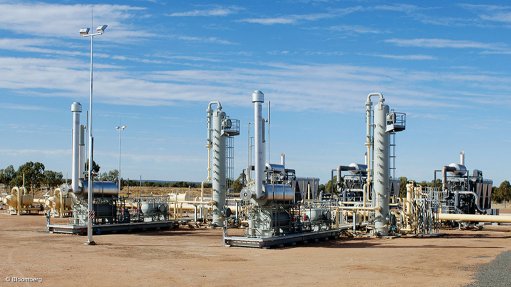
Photo by: Bloomberg
PERTH (miningweekly.com) – South Australia’s Cooper and Otway basins are poised for greater exploration on the back of higher gas demand from the eastern states, a new report by consultancy firm Core Energy has found.
The report, commissioned by the South Australian Department of State Development and published this week, noted that by 2018, yearly demand in the eastern Australia gas sector would approach about 2 000 PJ, rising from an historical high of about 700 PJ.
This means there would need to be an underlying reserve of about 40 000 PJ to support 20 years of activity, and 80 000 PJ over a 40-year outlook.
The report noted that gas resources located within or near existing gas production, transport and processing in the Cooper and Otway basins were considered the best opportunity for further exploration, development and supply of gas markets, at the lowest costs.
“Affordable gas is becoming more and more important as the National Electricity Market transitions away from coal-fired power towards a mix of gas and renewables,” said Mineral Resources and Energy Minister Tom Koutsantonis.
“Last month, the state government announced that we will be partnering with gas companies through a grant scheme that will incentivise more gas to be extracted and supplied to the South Australian market first, which will put downward pressure on power prices.”
Koutsantonis said that the report indicated the scale of the potential for the development of new gas projects in the Cooper and Otway basins.
“These South Australian resources could underpin decades of gas supply for both domestic gas and export liquefied natural gas (LNG) markets.”
In February, the Department of State Development documented preliminary estimates indicating there were more than 600-trillion cubic feet of sales gas and 80-billion barrels of oil in place – all within the Cooper basin’s tight sand, shale and deep coal reservoirs.